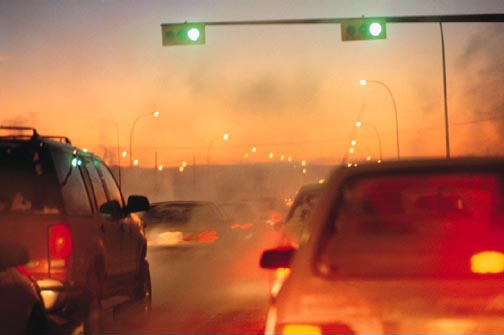
September 1st, 2016 is a very important date for van fleets, since the Euro 6 emission standard will become a mandatory requirement for all new light commercial vehicles.
The Euro 6 standard is the latest of the Euro regulations set by the European commission in order to lower the emissions generated by petrol, gas and diesel engines. In particular, the different sets of Euro Standards regulations aim at lowering the emissions of:
- carbon monoxide (CO), the most common type of fatal air poisoning in many countries
- hydrocarbons (HC), present in fuel and as solid in asphalt
- oxides of nitrogen (NOx), present in benzene, a natural component of crude oil
- particulate matter (PM), generated by the burning of fuel.
Over the last few years, both technology and the automotive industry have evolved in tandem to decrease emissions, so it is relatively safe to say that vehicles manufactured today are way less polluting than they were in the past—they are not only increasingly cleaner to operate but more fuel efficient as well.
The Euro 6 set, as opposed to its predecessor the Euro 5 which mainly targeted carbon dioxide emissions, is heavily focused on lowering nitrogen oxide emissions which have been linked to respiratory diseases and acid rain. The Euro 6 regulations force vehicle makers to reduce nitrogen oxide by more than 55 percent—this applies particularly to diesel engines.
As regards to the technology employed in Euro 6 vehicles to reduce nitrogen oxide, this can be reached through different solutions:
1 - using a simple NOx trap (only possible for small vans)
2 - using Selective Catalytic Reduction (SCR), which injects a reductant called AdBlue into the exhaust stream to neutralise the nasty NOx. AdBlue is diesel exhaust fluid added to a special extra tank in compatible vehicles, in a process as simple as topping up the windscreen washer reservoir—this fluid is used to break down NOx into less harmful nitrogen and water vapour.
3 - developing the Exhaust Gas Recirculation (EGR) technology that has been used in diesel vehicles for years, with the implementation of Low Pressure Exhaust Gas Recirculation.
So, what is going to happen for van fleets?
New vans have to be purchased following the Euro 6 standard.
Your costs might increase if you choose a Euro 6 van with SCR, due to the AdBlue refilling system (depending on the vehicle). Vans with SCR have been designed in order to make room for the AdBlue tank, meaning the fuel tank has been reduced to compensate, so trips to the petrol station and the number of fuel purchases are very likely to increase.
You are not expected to modify vehicles not belonging to the Euro 6 standard, but all non-Euro 6 LCVs will have to pay a daily charge if they need to enter the London Ultra-Low Emission Zone (ULEZ) from 2020 onwards—and this scheme may well be adopted in other areas, so think about it!
What’s the safest way of avoiding frequent trips to the petrol station and lowering emissions?
Having a system that detects the driving style of your staff and helps you train them in the art of ecodriving will definitely help you to save fuel. With the assistance of a complete management solution you will also be able to establish if all the trips to the petrol station are strictly necessary and make any appropriate improvements to your fuel card policy.
Contact us for more information on how to save fuel and decrease emissions, and receive a free demo of SynX.



